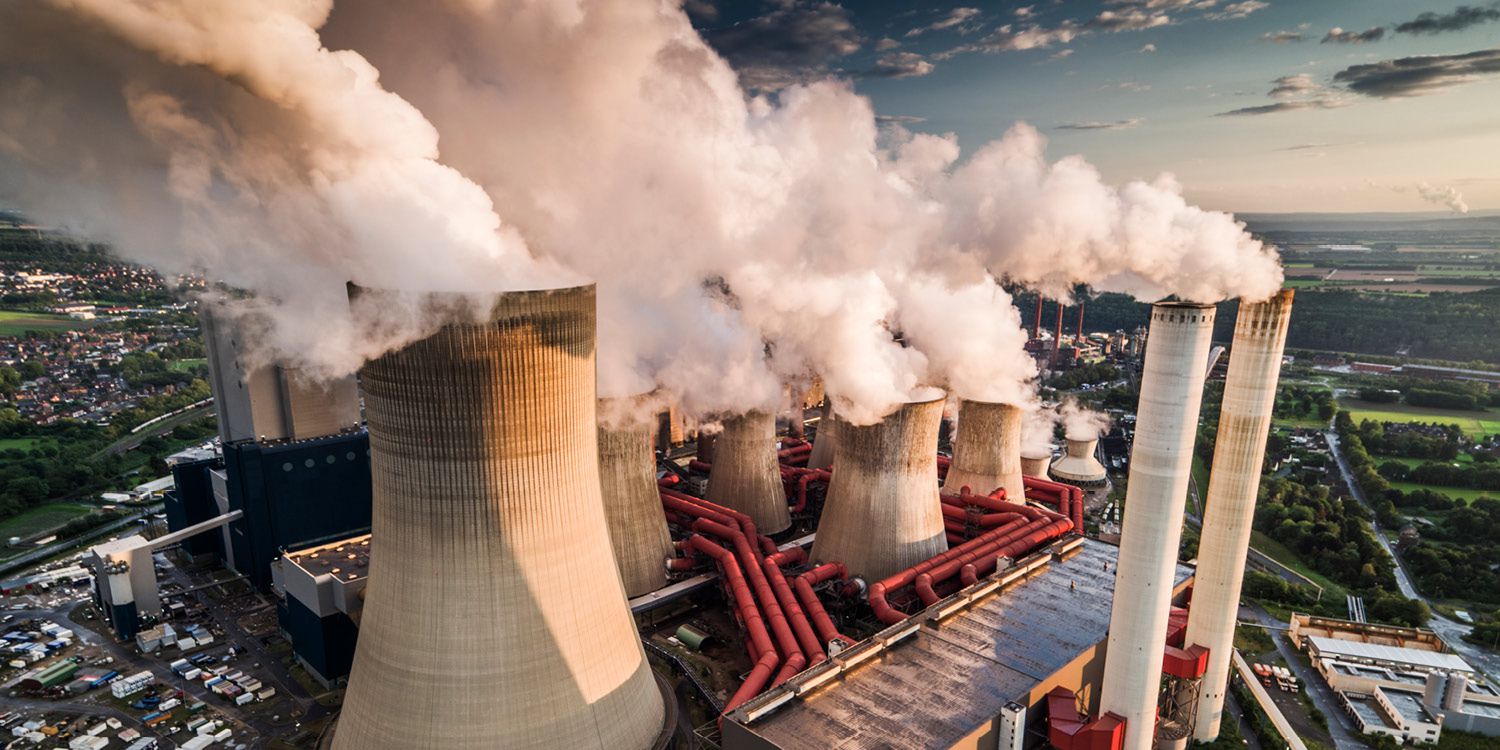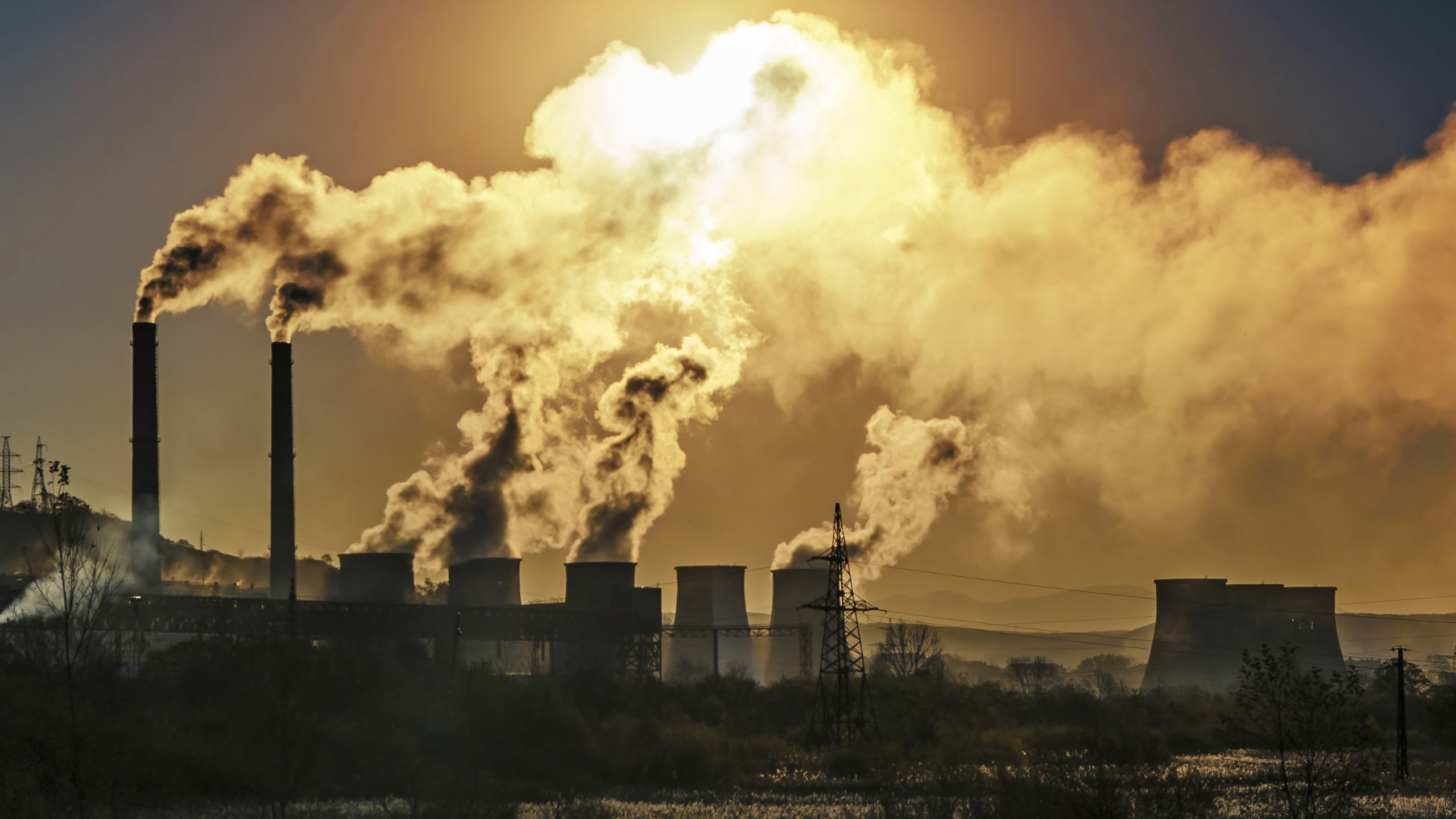Home>Gardening News and Trends>Why Are Carbon Dioxide And Water Vapor Called The Greenhouse Gases?


Gardening News and Trends
Why Are Carbon Dioxide And Water Vapor Called The Greenhouse Gases?
Modified: January 22, 2024
Learn about the latest news on why carbon dioxide and water vapor are known as greenhouse gases and their impact on the environment.
(Many of the links in this article redirect to a specific reviewed product. Your purchase of these products through affiliate links helps to generate commission for Chicagolandgardening.com, at no extra cost. Learn more)
Table of Contents
Introduction
The term “greenhouse gases” has gained significant attention in discussions about climate change and global warming. These gases play a crucial role in regulating the Earth’s temperature and maintaining the conditions necessary for life to thrive. Among the various greenhouse gases, carbon dioxide (CO2) and water vapor (H2O) are considered the most influential. They trap heat in the Earth’s atmosphere and contribute to the greenhouse effect. Understanding why these gases are referred to as greenhouse gases is essential in comprehending their impact on the planet’s climate system.
In this article, we will explore the reasons behind carbon dioxide and water vapor being classified as greenhouse gases. We will delve into the characteristics and behavior of these gases, highlighting their ability to absorb and emit infrared radiation, which is crucial to the functioning of the greenhouse effect. Furthermore, we will compare the roles of carbon dioxide and water vapor as greenhouse gases, examining their concentrations, sources, and interactions with the Earth’s climate system. Lastly, we will discuss the impact of greenhouse gases on the Earth’s climate, highlighting the concerns and implications associated with their increasing concentrations in the atmosphere.
By gaining a deeper understanding of why carbon dioxide and water vapor are considered greenhouse gases, we can appreciate the complexity of Earth’s climate system and the importance of mitigating greenhouse gas emissions. Let us now delve into the definition and characteristics of greenhouse gases, starting with carbon dioxide as a prominent greenhouse gas.
Definition of Greenhouse Gases
Greenhouse gases are gases present in the Earth’s atmosphere that have the ability to absorb and emit infrared radiation. These gases create a layer in the atmosphere that acts like a blanket, trapping heat from the sun and preventing it from escaping back into space. This phenomenon is known as the greenhouse effect and is essential for maintaining the Earth’s temperature at a level suitable for life.
While there are several greenhouse gases, including methane (CH4), nitrous oxide (N2O), and ozone (O3), carbon dioxide (CO2) and water vapor (H2O) are the most prevalent and significant contributors to the greenhouse effect. They play a vital role in regulating the Earth’s climate system.
Carbon dioxide is an odorless, colorless gas that is naturally present in the Earth’s atmosphere. It is produced through natural processes like respiration and decomposition, as well as human activities such as burning fossil fuels, deforestation, and industrial processes. Carbon dioxide has a long lifespan in the atmosphere, which allows it to accumulate over time.
Water vapor, on the other hand, is the gaseous form of water. Unlike carbon dioxide, which has both natural and anthropogenic sources, water vapor is predominantly a result of natural processes, including evaporation from lakes, rivers, and oceans. It is also released into the atmosphere through transpiration by plants.
The significant distinction between carbon dioxide and water vapor lies in their concentrations and lifespans. While water vapor is present in much higher concentrations in the atmosphere, it has a relatively short lifespan. It effectively cycles through the Earth’s atmosphere, condensing into clouds and precipitating as rain or snow. Carbon dioxide, on the other hand, remains in the atmosphere for an extended period, contributing to a gradual increase in its concentration.
Understanding the distinction between these greenhouse gases is crucial for comprehending their individual impact on the Earth’s climate system. In the following sections, we will explore the specific roles of carbon dioxide and water vapor as greenhouse gases and how they influence the Earth’s climate.
Role of Carbon Dioxide as a Greenhouse Gas
Carbon dioxide (CO2) plays a fundamental role as a greenhouse gas in the Earth’s atmosphere. It is primarily responsible for regulating the Earth’s temperature by absorbing and emitting infrared radiation, which contributes to the greenhouse effect.
When the Sun’s energy reaches the Earth’s surface, it is absorbed and re-emitted as heat. Some of this heat is radiated back into space, while greenhouse gases like carbon dioxide trap a portion of it in the atmosphere. This trapped heat warms the planet, making it suitable for sustaining life.
The concentration of carbon dioxide in the atmosphere has been steadily increasing due to human activities, particularly the burning of fossil fuels such as coal, oil, and natural gas. These activities release carbon dioxide into the atmosphere faster than natural processes can absorb it.
As carbon dioxide levels rise, more heat becomes trapped in the atmosphere, leading to an increase in average global temperatures. This phenomenon is commonly referred to as global warming. The consequences of global warming include rising sea levels, melting glaciers, more frequent and severe weather events, disruption of ecosystems, and impacts on human health.
It is important to note that carbon dioxide does not act alone in contributing to the greenhouse effect. Other greenhouse gases, such as methane and nitrous oxide, also play significant roles. However, carbon dioxide is particularly important due to its higher concentration in the atmosphere and its longer lifespan.
Efforts to mitigate the impact of carbon dioxide as a greenhouse gas focus on reducing emissions through various means. These include transitioning to renewable energy sources, improving energy efficiency, implementing carbon capture and storage technologies, and promoting reforestation and afforestation to enhance carbon sinks.
The role of carbon dioxide as a greenhouse gas and its impact on the Earth’s climate cannot be understated. It serves as a crucial indicator of human activities affecting the environment and provides a focus for global climate change mitigation efforts.
Role of Water Vapor as a Greenhouse Gas
Water vapor (H2O) is another significant greenhouse gas that plays a crucial role in regulating the Earth’s climate. It is the most abundant greenhouse gas in the atmosphere and has a profound impact on the greenhouse effect.
Water vapor is formed through the process of evaporation, in which water from the Earth’s surface, such as oceans, lakes, and rivers, turns into vapor and rises into the atmosphere. It is also released through transpiration by plants. Once in the atmosphere, water vapor can exist as an invisible gas or condense into visible water droplets, forming clouds and precipitation.
One of the important characteristics of water vapor as a greenhouse gas is its ability to absorb and emit a significant amount of thermal radiation in the form of infrared energy. This property allows water vapor to effectively trap heat in the Earth’s atmosphere, intensifying the greenhouse effect.
Water vapor acts as both a positive and negative feedback in the climate system. Positive feedback refers to a process that amplifies the initial change, while negative feedback dampens or reduces the initial change. When the Earth’s surface warms, more water evaporates, leading to an increase in atmospheric water vapor concentration. This, in turn, enhances the greenhouse effect and further warms the planet, creating a positive feedback loop that contributes to temperature increases.
On the other hand, water vapor also plays a crucial role in cloud formation. As water vapor rises and cools, it condenses into tiny water droplets or ice crystals, forming clouds. Clouds reflect sunlight back into space, which helps to cool the Earth’s surface. This process acts as a negative feedback by offsetting some of the initial temperature rise caused by the greenhouse effect.
The role of water vapor as a greenhouse gas is intimately connected with the hydrological cycle, which includes evaporation, condensation, and precipitation. Changes in the Earth’s temperature can influence the water vapor content in the atmosphere, which, in turn, impacts weather patterns and climate dynamics.
It is important to note that the concentration of water vapor in the atmosphere is largely influenced by temperature. As the atmosphere warms, its capacity to hold water vapor increases, leading to higher concentrations of water vapor. This phenomenon is known as the Clausius-Clapeyron relationship.
While water vapor is naturally present in the atmosphere and has a shorter lifespan compared to carbon dioxide, its role as a greenhouse gas is crucial in intensifying the greenhouse effect and shaping the Earth’s climate. Understanding and monitoring water vapor changes, along with other greenhouse gases, are essential for predicting and addressing the impacts of climate change.
Comparison of Carbon Dioxide and Water Vapor as Greenhouse Gases
Carbon dioxide (CO2) and water vapor (H2O) are the two most significant greenhouse gases in the Earth’s atmosphere. While both contribute to the greenhouse effect and play essential roles in regulating the Earth’s climate, there are notable differences between these two gases.
One notable distinction is their concentrations in the atmosphere. Water vapor is present in much higher concentrations than carbon dioxide. While the amount of carbon dioxide in the atmosphere is measured in parts per million (ppm), water vapor concentrations can vary from less than 0.01% to as much as 4% in the Earth’s lower atmosphere.
Another difference lies in their lifespans. Carbon dioxide has a longer lifespan in the atmosphere compared to water vapor. Once carbon dioxide is released into the atmosphere, it can remain there for hundreds of years or more, contributing to the long-term accumulation of this greenhouse gas. Water vapor, on the other hand, has a relatively short lifespan in the atmosphere. It continuously cycles through the Earth’s system, condensing and precipitating as rain or snow.
The sources of these gases also differ. Carbon dioxide has both natural and anthropogenic sources. Natural sources include respiration, volcanic eruptions, and natural decay of organic matter, while anthropogenic sources mainly arise from burning fossil fuels, deforestation, and industrial processes. In contrast, water vapor primarily stems from the natural processes of evaporation from bodies of water and transpiration from plants.
When it comes to their ability to absorb and emit infrared radiation, both carbon dioxide and water vapor are effective greenhouse gases. They have unique absorption spectra that allow them to absorb specific wavelengths of infrared radiation. However, carbon dioxide is relatively more effective at absorbing certain wavelengths compared to water vapor. This is known as the “window effect” because water vapor allows specific wavelengths to pass through, whereas carbon dioxide absorbs a wider range of infrared radiation.
Furthermore, the role of water vapor in the climate system extends beyond its greenhouse effect. As water vapor condenses and forms clouds, it contributes to the Earth’s albedo, which refers to the reflectivity of the planet’s surface. Clouds reflect sunlight back into space, cooling the Earth’s surface and acting as a negative feedback to the initial warming caused by greenhouse gases.
While carbon dioxide and water vapor have their distinct characteristics, it is important to recognize that they interact with and influence each other in the Earth’s climate system. As temperatures increase due to the greenhouse effect, the capacity of the atmosphere to hold water vapor also increases, potentially amplifying the warming effect.
Understanding the similarities and differences between carbon dioxide and water vapor as greenhouse gases helps scientists and policymakers develop strategies to mitigate climate change. Monitoring and reducing the emissions of both gases are crucial steps in addressing the challenges posed by global warming and ensuring the sustainable future of our planet.
Impact of Greenhouse Gases on the Earth’s Climate
The increasing concentrations of greenhouse gases, including carbon dioxide (CO2) and water vapor (H2O), have significant impacts on the Earth’s climate. These gases trap heat in the atmosphere, contributing to the greenhouse effect and resulting in various consequences for the planet and its inhabitants.
One of the primary impacts of greenhouse gases is global warming. As the concentrations of these gases increase, more heat is trapped in the atmosphere, leading to a rise in average global temperatures. This rise in temperature has far-reaching effects, including the melting of polar ice caps and glaciers, rising sea levels, and increased frequency and severity of extreme weather events such as hurricanes, heatwaves, and droughts.
The impacts of global warming are not limited to the physical environment. Climate change also has implications for ecosystems and biodiversity. Shifts in temperature and precipitation patterns can disrupt ecosystems, alter habitats, and endanger species. Coral reefs, for example, are particularly vulnerable to climate change due to increased ocean temperatures and ocean acidification caused by higher carbon dioxide levels.
Changes in climate also have implications for human health. Higher temperatures and more frequent heatwaves can lead to heat-related illnesses and deaths. Changing precipitation patterns can affect water availability, leading to droughts or increased flooding, which can impact agriculture, water resources, and food security. Additionally, the spread of diseases and pests can be influenced by climate change, affecting human populations and agricultural systems.
Furthermore, the increasing concentrations of greenhouse gases can have feedback effects on the climate system. For example, as temperatures rise, permafrost in the Arctic regions begins to thaw. This thawing releases stored carbon dioxide and methane, further contributing to the greenhouse effect and amplifying global warming.
Addressing and mitigating the impact of greenhouse gases on the Earth’s climate requires collective effort and proactive measures. This includes reducing greenhouse gas emissions by transitioning to renewable energy sources, improving energy efficiency, implementing sustainable land-use practices, and promoting afforestation and reforestation to enhance carbon sinks. International agreements, such as the Paris Agreement, aim to limit global warming by reducing greenhouse gas emissions and adapting to the changing climate.
It is crucial to emphasize the importance of understanding and mitigating the impact of greenhouse gases on the Earth’s climate. By taking action and making sustainable choices, we can work towards a more balanced and resilient planet for future generations.
Conclusion
Greenhouse gases, including carbon dioxide (CO2) and water vapor (H2O), are fundamental to the Earth’s climate system. These gases play a crucial role in regulating the planet’s temperature by trapping heat in the atmosphere, sustaining the greenhouse effect, and making the Earth habitable for life.
Both carbon dioxide and water vapor are greenhouse gases that absorb and emit infrared radiation, contributing to the warming of the Earth’s surface. While carbon dioxide remains in the atmosphere for an extended period, water vapor has a shorter lifespan due to its continuous cycling through the hydrological cycle.
Carbon dioxide, primarily emitted through human activities like burning fossil fuels, deforestation, and industrial processes, has contributed to an increase in global temperatures, resulting in significant impacts such as rising sea levels, melting glaciers, and more extreme weather events.
Water vapor, the most abundant greenhouse gas, influences the climate system through its ability to absorb and emit thermal radiation. It plays both positive and negative feedback roles, intensifying the greenhouse effect when temperatures rise and contributing to cloud formation, which counteracts warming by reflecting sunlight back into space.
The impacts of greenhouse gases on the Earth’s climate are wide-ranging and include global warming, ecosystem disruptions, threats to biodiversity, and human health risks. These effects are interconnected and have far-reaching consequences for the environment and human societies.
Addressing the impact of greenhouse gases requires collective action. Efforts to reduce greenhouse gas emissions and transition to renewable energy sources are necessary to mitigate climate change and minimize its adverse effects. Additionally, adapting to the changing climate and implementing sustainable land-use practices are crucial for building resilience.
Understanding the roles and interactions of greenhouse gases like carbon dioxide and water vapor, along with other factors influencing the climate system, is essential for making informed decisions and taking proactive steps towards a more sustainable and resilient future. By prioritizing climate change mitigation and adopting sustainable practices, we can work towards preserving the Earth’s climate and ensuring the well-being of future generations.





